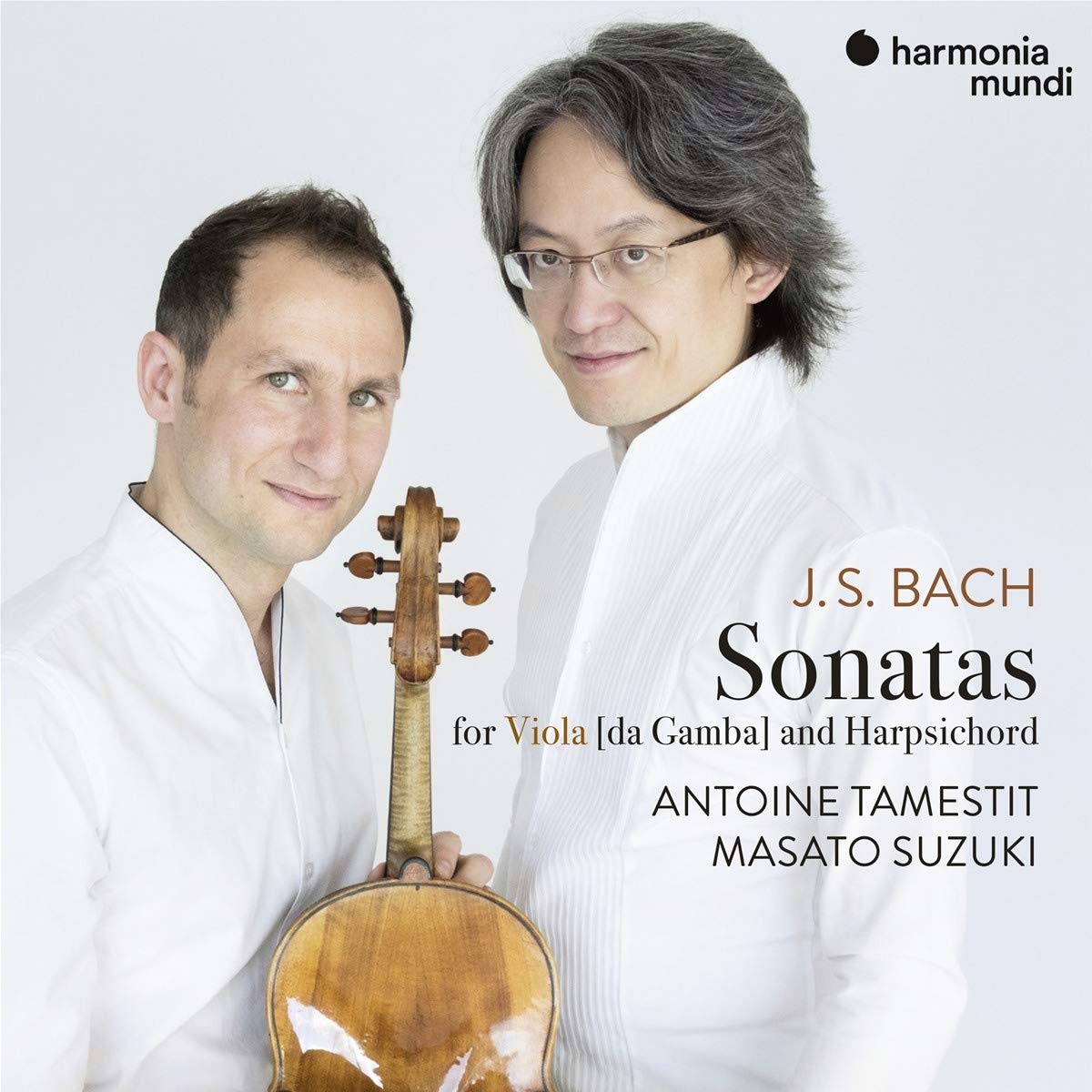Antoine Tamestit viola & Masato Suzuki harpsichord
Arrangements of BWV 1027-9, and BWV 5iii
Peter Wollny writes the liner notes to these arrangements for viola and harpsichord to make the case for rearranging gamba music for the viola, Bach’s known preferred instrument for ensemble playing. But, apart from the obvious similarities in tessitura and the fun to be had playing the gamba parts on the viola if that is your instrument, there are not many convincing arguments. We can indeed imagine JSB picking up his viola and playing one of these pieces to improve his children’s keyboard skills, but . . .
One of the casualties of these kinds of arrangement which is perhaps most obvious in the G major BWV 1027 sonata is that the tones of the viola are so luscious that the right hand of the harpsichord – recorded rather more reticently – doesn’t really stand a chance against the viola. This is not a true marriage of equal tones, as it is on a thinner-toned viola da gamba, nor does Tamestit on the ‘Mahler’ Stradivarius of 1672 he was loaned for this recording really display much HIP awareness. It isn’t just the rubati and the fulsome tone: it’s those little give-away tricks like swelling through long notes and giving us a concernedly subservient tone for the ‘less important’ counter-subjects.
The tenor aria BWV 5iii is one of the few that is likely to have a viola obligato; though no instrument is specified the part is written in the alto clef. But however much this is a true trio sonata, the right hand of the harpsichord only becomes a true partner for a few bars at the start of the middle section from bar 69 onwards.
They are both fine players, but not well matched here. They play at A=415, but there is no information on matters like temperament. Viola players may be glad to hear these plausible arrangements, but many listeners will think that Bach’s music is best served by his chosen scoring.
David Stancliffe
